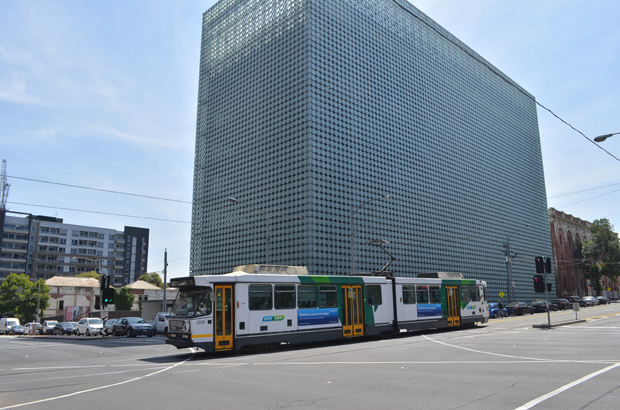Following on from last week's article Concrete: lowering its carbon footprint, steel is in the spotlight with how the industry is developing and improving the materials to create new and better products.
Worldwide steel production comes in at just over 1.3 billion tonnes per year and growing every year. In Australia eight million tonnes of steel is produced each year with a turnover of $29 million.
As with concrete, sustainability is a key issue with steel, especially as the global economy faces economic challenges, the Australian Stainless Steel Development Association says.
There are many factors that allow steel, particularly stainless steel, to be sustainable as its main standard feedstock is scrap.
Stainless steel has a long service life, which can average up to 15 to 20 years, or longer, particularly in prestigious buildings, such as the Empire State Building.
Additionally, it has excellent corrosion resistance, is clean and unchanging in appearance and has exceptional hygiene characteristics.
Steel is reusable, entirely recyclable, and is most likely the most recycled product in the world. A total of 36 per cent of world steel production is from recycled material. At end-of-life, around 90 per cent of the steel used is recovered and recycled, which can be repeated many times without loss of quality.
 It also needs very little cleaning or maintenance and does not contribute to indoor pollution as materials emitting volatile organic compounds do.
It also needs very little cleaning or maintenance and does not contribute to indoor pollution as materials emitting volatile organic compounds do.
An example of a building made of steel that requires very little maintenance is the Milson Island Indoor Sports Stadium, which is an entirely modular building, from the floors and walls to the roof. It can be reduced in size, or moved with relative ease. It was prefabricated off-site, which meant the steel frame erection was completed in days and allowed other trades to quickly move onto and enclose the structure. It features a structural frame of galvanized steel and marine grade Colorbond roofing material, to ensure the building remains low-maintenance.
Improvements in steel production are occurring constantly for stainless steel and its raw materials with many of the byproducts of steel production having found uses in other areas, such as with concrete. Around 80 per cent of the 1.6 million tonnes of blast furnace slag is now used as a cement substitute in concrete, according to the Australian Steel Institute.
Australia’s biggest manufacturer of steel and producer of Zincalume, BlueScope Steel, are committed to the efficient use of resources, preventing pollution, and reducing the environmental impact of its operations and products, says the company’s market manager - commercial and industrial, Manu Siitonen.
“Sustainability is about more than energy use or carbon dioxide emissions. How a product is created is important, but it is equally important to consider how that product is used over its life, and how it is disposed of at the end of that life,” Mr Siitonen says.
 RMIT Design Hub
RMIT Design Hub
BlueScope believes in the life-cycle approach to sustainability - assessing the impact of a product over its entire life, from cradle-to-grave. This includes raw material extraction, product manufacture, product use, disposal or recovery at end-of-life, and transport, he says.
Hot-dip galvanized steel has become more widely used in architectural applications where the superior life cycle costs have been recognised by architect, engineers and fabricators, operations manager of GB Galvanizing Vince Gucciardo says.
GB Galvanizing were the Overall 2012 Sorel Award winner with the RMIT Design Hub - a nine-storey tower of flexible loft-like workshops cloaked by more than 17,000 sequin-like 600mm glass discs, each resembling a steel drum. They are comprised of a 130mm-deep galvanized steel hoop in-filled with sandblasted glass. Each of these drums incorporates photovoltaic cells, which have evaporative cooling and fresh air intakes that improve the internal air quality and reduce running costs. The hot dip galvanized rings deliver a unique aspect, to what is otherwise, a rectangular building.

